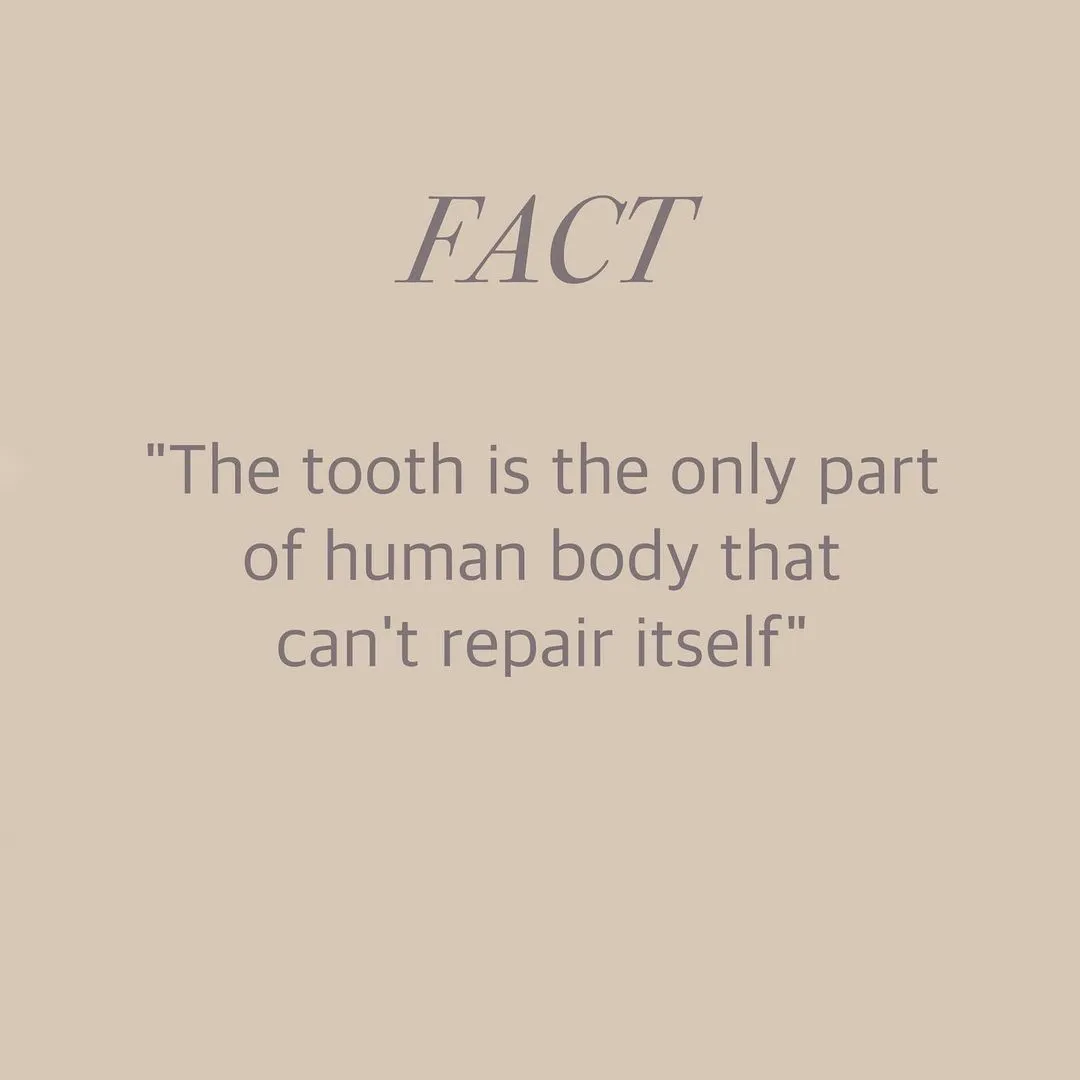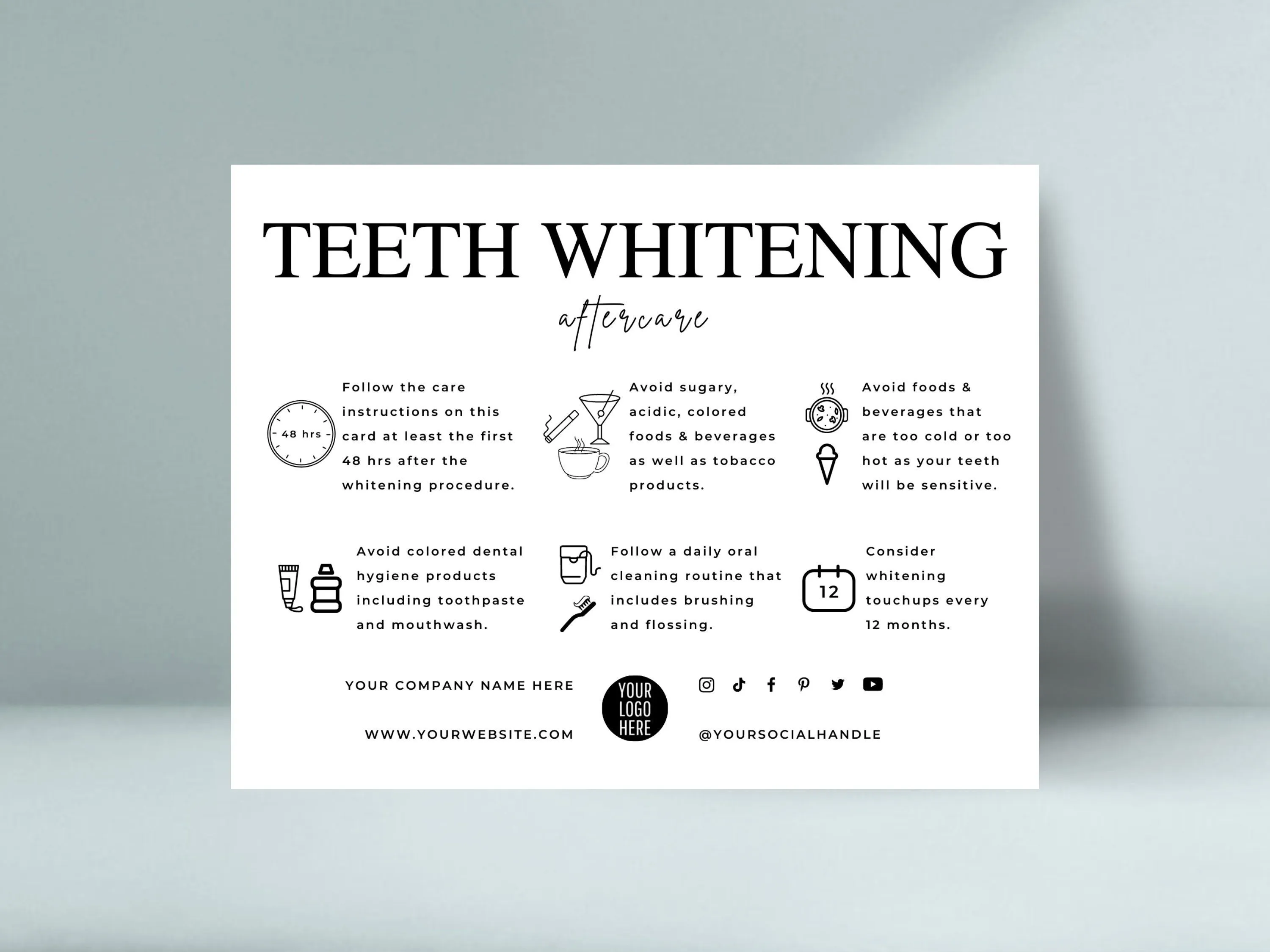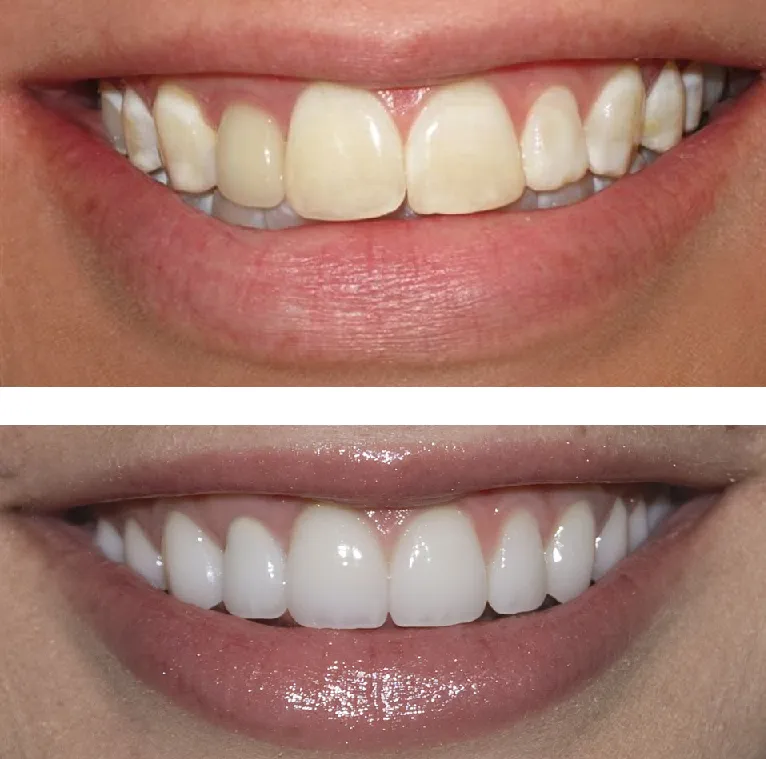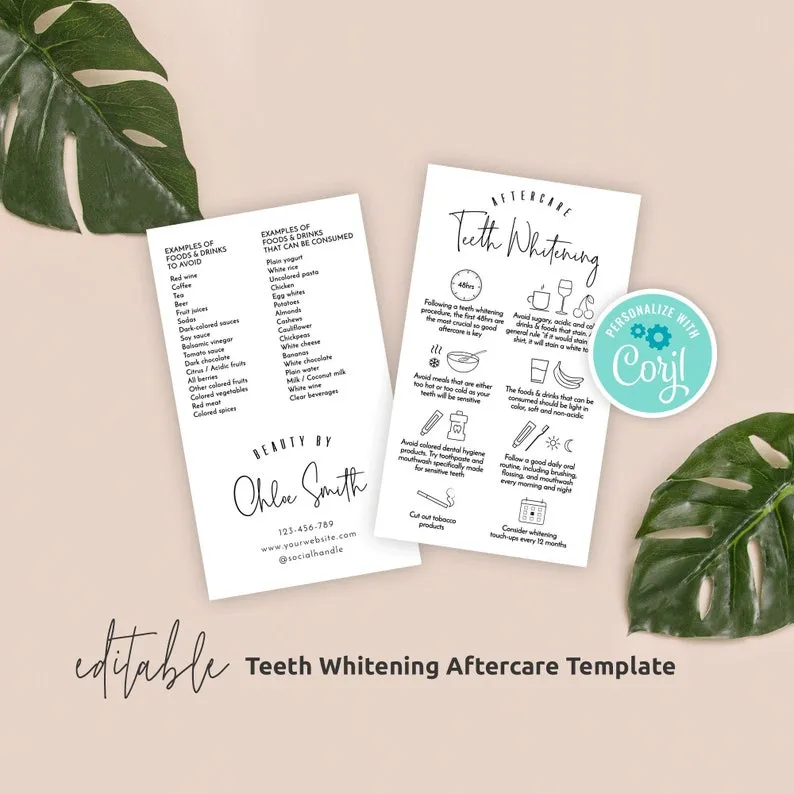Achieving a brighter, whiter smile through teeth whitening is a significant cosmetic accomplishment, but the journey doesn’t end when you walk out of the dentist’s office or finish your at-home treatment. Proper post-care is crucial for maximizing your results, minimizing any potential discomfort, and ensuring your dazzling new smile lasts. This guide provides all the essential information you need to navigate the post-whitening period, ensuring you maintain your radiant grin for as long as possible. Following these guidelines is key to preventing your teeth from re-staining and keeping them healthy. It’s a small price to pay for a smile you’ll love.
Understanding Post-Whitening Sensitivity
One of the most common experiences following teeth whitening is temporary tooth sensitivity. This sensation is usually a mild discomfort, but it’s essential to understand why it happens and how to manage it effectively. The whitening agents, such as hydrogen peroxide or carbamide peroxide, work by penetrating the enamel and oxidizing the stain molecules within the teeth. This process can sometimes irritate the nerve endings in the teeth, leading to sensitivity. It’s important to remember that this sensitivity is usually temporary and should subside within a few days to a couple of weeks as your teeth adjust.
Causes of Sensitivity
Sensitivity can arise from several factors directly related to the whitening process. The whitening agents themselves can cause some degree of irritation. Moreover, the teeth’s enamel can become temporarily porous during the whitening process, making the nerves more susceptible to external stimuli. Pre-existing conditions like receding gums or thin enamel can also exacerbate sensitivity. Sometimes, the trays used for at-home whitening might not fit perfectly, leading to uneven application of the whitening agent and increased sensitivity in certain areas. Understanding the causes is the first step in dealing with it and ensuring your comfort during the post-whitening phase.
How to Manage Sensitivity

Fortunately, there are several effective ways to manage tooth sensitivity following a whitening treatment. The most immediate solution is to use a toothpaste designed for sensitive teeth. These toothpastes often contain ingredients like potassium nitrate that help block the nerve endings, reducing discomfort. Over-the-counter pain relievers, such as ibuprofen or acetaminophen, can also provide relief. Avoid extremely hot or cold foods and drinks, as these can trigger sensitivity. Your dentist may also recommend fluoride treatments to strengthen your enamel and reduce sensitivity. In severe cases, they may suggest prescription-strength fluoride products or other in-office treatments. It is important to communicate any discomfort you’re experiencing with your dental professional.
Dietary Restrictions After Teeth Whitening
Your diet plays a critical role in the success of your teeth whitening treatment. Certain foods and drinks can stain your teeth, especially in the days and weeks immediately following the procedure. The enamel is more porous after whitening, making it more susceptible to staining. Adhering to dietary guidelines is essential for maintaining the brightness of your new smile and preventing premature discoloration. While it may seem restrictive at first, the temporary adjustments will significantly impact the long-term results. Think of it as an investment in the longevity of your whiter teeth.
Foods and Drinks to Avoid
The list of foods and beverages to avoid is relatively extensive, but it is necessary to obtain desired results. The most common culprits include coffee, tea (especially black tea), red wine, and dark sodas. These drinks contain pigments that easily stain teeth. Additionally, you should avoid deeply colored foods like berries (blueberries, blackberries, strawberries), beets, soy sauce, and tomato-based sauces. Certain spices, such as turmeric and curry, can also cause staining. Essentially, if a food or drink could stain a white shirt, it could also stain your newly whitened teeth. It is wise to avoid them for the first two weeks after whitening, or at least minimize their consumption as much as possible.
Foods and Drinks to Consume

Fortunately, there are plenty of delicious and safe options you can enjoy while your teeth are more vulnerable. Stick to a diet rich in light-colored foods. This includes white meats (chicken, fish), pasta with white sauces, rice, potatoes, and plain yogurt. Drink plenty of water to stay hydrated and rinse your mouth after eating to remove any potential staining particles. Milk is also a good option as it is relatively neutral in color and helps to neutralize acids that could potentially damage your enamel. If you have a craving for something sweet, clear or lightly colored desserts are preferable. Remember that your patience in the short-term will provide you with long-term benefits.
Oral Hygiene Practices After Whitening
Proper oral hygiene is paramount to the longevity of your teeth whitening results. This goes beyond simply brushing and flossing. The way you care for your teeth after whitening can significantly affect how long your bright smile lasts. This includes choosing the right products, implementing effective techniques, and maintaining a consistent routine. The goal is to remove plaque and debris without causing any further damage or staining. Good oral hygiene practices are not just about aesthetics; they also play a vital role in overall dental health, protecting your teeth from decay and gum disease. Prioritizing these practices will ensure your smile remains healthy and bright.
Brushing and Flossing Techniques
Following teeth whitening, it’s essential to be gentle yet thorough with your brushing and flossing routine. Use a soft-bristled toothbrush to avoid irritating the gums or scratching the enamel. Brush your teeth at least twice a day for two minutes each time, using gentle, circular motions. Avoid brushing too aggressively, as this can lead to enamel erosion and gum recession. Floss once a day to remove plaque and food particles from between your teeth. Make sure to use a gentle flossing technique to avoid irritating your gums, and always rinse thoroughly after flossing to remove any dislodged debris. Proper brushing and flossing help to keep your teeth and gums healthy.
Mouthwash Recommendations

The right mouthwash can enhance your oral hygiene regimen. After whitening, choose an alcohol-free mouthwash. Alcohol can dry out your mouth and potentially worsen any sensitivity. Look for mouthwashes that contain fluoride, which helps to strengthen your enamel and protect against cavities. Avoid mouthwashes with strong colors or artificial dyes, as these can potentially stain your teeth. Use mouthwash after brushing and flossing, following the instructions on the product label. Swish the mouthwash around for the recommended time, typically 30 seconds, and then spit it out. Using mouthwash regularly can freshen your breath and help remove any remaining plaque and debris, contributing to a healthier and brighter smile.
Maintaining Your Whitened Smile
Maintaining your whitened smile involves a combination of good oral hygiene practices, a mindful diet, and regular dental check-ups. While teeth whitening can produce dramatic results, it is not permanent. Over time, your teeth can gradually re-stain due to various factors. However, with consistent care and maintenance, you can extend the life of your beautiful smile and keep it looking its best for years to come. Being proactive about your oral health and following the dentist’s recommendations will help you enjoy the benefits of your teeth whitening treatment for as long as possible. Remember that it’s a lifestyle commitment.
Regular Dental Check-ups
Regular dental check-ups are essential for maintaining your oral health and the results of your teeth whitening treatment. Your dentist can monitor the condition of your teeth and gums, identifying any potential issues early. During your check-ups, your dentist may recommend professional teeth cleanings to remove plaque and surface stains, helping to keep your teeth bright. They can also provide personalized advice on maintaining your whiter smile and address any concerns you may have. Schedule check-ups every six months, or as recommended by your dentist, to ensure your oral health remains in tip-top shape and your smile continues to shine.
Touch-up Treatments

Over time, your teeth may gradually lose some of their brightness. Touch-up treatments can help to refresh your smile and maintain your desired level of whiteness. Your dentist can provide professional touch-up whitening treatments, or they may recommend at-home whitening kits for touch-ups. The frequency of touch-up treatments depends on factors such as your diet, oral hygiene habits, and the initial whitening treatment. Discuss your options with your dentist to determine the best approach for your individual needs. These touch-ups will help you retain the results of your initial whitening treatment and keep your smile looking its best.
Long-Term Stain Prevention
Preventing stains long-term is a critical aspect of maintaining a bright and healthy smile. Beyond the initial post-whitening period, continuing good oral hygiene practices and making informed dietary choices will help you prevent your teeth from re-staining. Additionally, avoid smoking or using tobacco products, as these can quickly stain your teeth. If you consume staining foods and beverages, try to do so in moderation and rinse your mouth with water or brush your teeth soon after consumption. Consider using a whitening toothpaste as part of your daily routine to gently remove surface stains and maintain brightness. By adopting these long-term strategies, you can protect your investment in teeth whitening and keep your smile looking its best for many years.
In conclusion, proper post-whitening care is essential for achieving and maintaining the best possible results from your teeth whitening treatment. By understanding and managing sensitivity, adhering to dietary guidelines, practicing good oral hygiene, and following your dentist’s recommendations, you can enjoy a brighter, healthier smile for years to come. Make these habits a part of your everyday routine, and your radiant smile will continue to make a lasting impression. The effort is well worth it for a confident and dazzling smile. Embrace these practices, and your smile will thank you!
